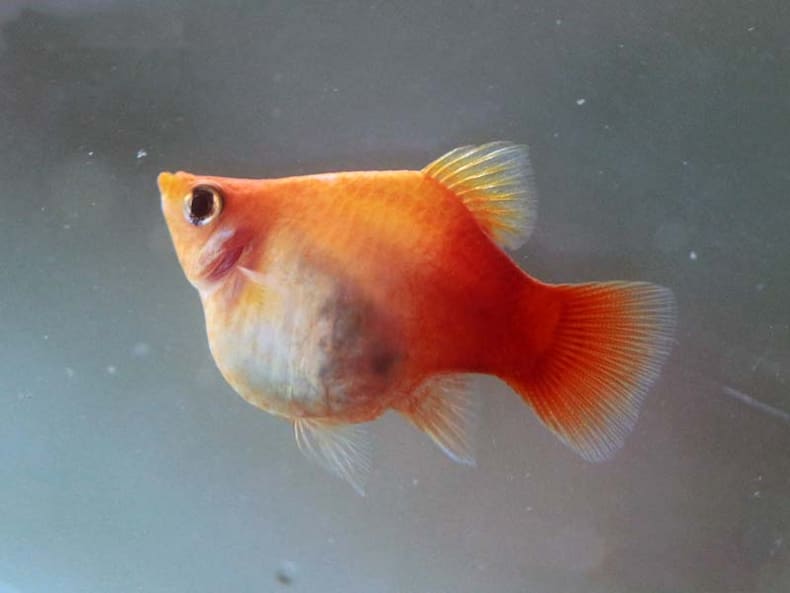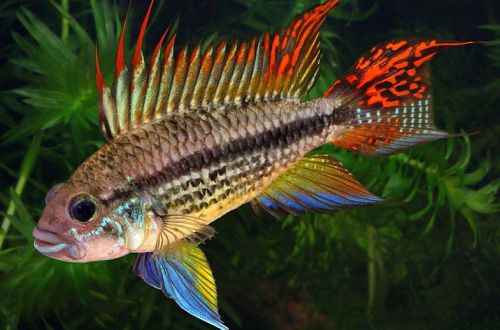
Pecilia balloon
Balloon Platy or Pecilia disk, the English-language trade name is Balloon Platy. The fish has a bizarre appearance – a curved hunched back and a strongly swollen abdomen in both females and males. Body color and pattern may vary.

Probably the most controversial variety of Pecilia. If the differences in other decorative forms are quite harmless (color, size of the fins), then in this case there are anatomical problems. The fish experience difficulty swimming, difficulty reproducing, and generally a shorter lifespan.
Commercial breeding. Pecilia balloon is widely distributed in Asian countries. In Europe and America, this species is much less common due to the negative attitude towards such selection from the public and animal rights organizations.
Brief information:
- The volume of the aquarium – from 60 liters.
- Temperature – 20-28°C
- Value pH — 7.0–8.2
- Water hardness – medium to high hardness (10-30 GH)
- Substrate type – any
- Lighting – moderate or bright
- Brackish water – acceptable at a concentration of 5-10 grams per liter of water
- Water movement – light or moderate
- Fish size – 5-7 cm
- Nutrition – any food with herbal supplements
- Temperament – peaceful
- Content alone, in pairs or in a group
Maintenance and care, arrangement of the aquarium

The content requirements are similar to other varieties of Pecilia. The fish need warm, slightly alkaline water with high hardness values and the presence of shelters in the form of thickets of plants. Unlike its congeners, which are able to survive a short-term deterioration in water quality, the disc platy is less hardy and prone to disease, and therefore requires more careful maintenance of the aquarium. Fry show the same susceptibility to diseases.
Food. It is important to provide a balanced diet, including protein and vegetable components. Live or frozen invertebrates such as brine shrimp, bloodworms, daphnia, mosquito larvae, etc. will be a good addition.
behavior and compatibility. Peaceful calm fish. Due to the structural features and problems with swimming, it is advisable to select the same slow-moving species as aquarium neighbors. Excessively active fish will make a bad company.
Breeding / reproduction. Breeding is possible, but as noted above, in most cases, fry will be painful, which negatively affects their survival. In addition, part, and in some cases the entire brood, will have the usual body shape, since the characteristic feature of this variety, although inherited, is not dominant. It can manifest itself through one or even several generations.





